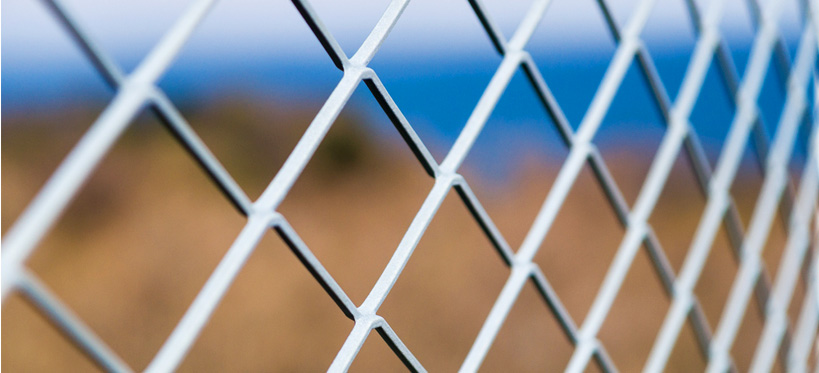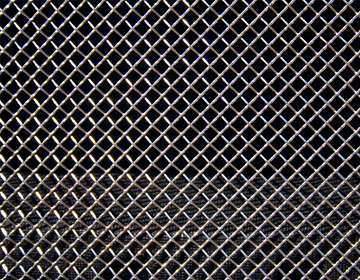
Woven Wire Mesh vs. Perforated Metal: Choosing the Right Material for Your Project
Introduction
Woven wire mesh and perforated metal plate sieves are essential tools used in various industries for particle size analysis, filtration, and separation processes. These sieves, including those produced by California Wire Products are designed to efficiently and accurately sort and separate particles of different sizes from a mixture. Let’s delve into what these sieves are and why they play a crucial role in industries such as mining, construction, and agriculture.Woven Wire Mesh Sieves
Woven wire mesh sieves consist of a frame with a woven wire mesh stretched tightly across it. The wire mesh is made up of interlocking wires, forming a grid of openings or apertures. Particles are sorted based on their size as they pass through these openings, making woven wire mesh sieves an integral part of quality control and particle analysis.Perforated Plate Sieves
Perforated metal plate sieves, on the other hand, feature a solid metal plate with uniformly spaced holes or perforations. These holes come in various sizes, allowing particles to pass through or be retained based on their dimensions. Perforated metal plate sieves are widely used in industries where durability and resistance to wear are crucial.Importance in Various Industries
Woven wire mesh and perforated metal plate sieves are indispensable tools in multiple industries in Sacramento, CA and elsewhere, playing vital roles in various processes. Here’s why they are so important:Mining
In the mining industry, these sieves are used for particle size analysis to ensure the proper size distribution of mined materials. They help in quality control, ensuring that valuable minerals are efficiently separated from waste.Construction
In construction, sieves are utilized to assess the quality of aggregates like sand, gravel, and crushed stone. Accurate particle size analysis is critical to ensure the strength and durability of concrete and other construction materials.Agriculture
Farmers and agronomists use sieves to analyze soil composition and assess the size distribution of seeds and grains. This information aids in making informed decisions about crop management and seed selection. Now that we’ve established their importance, let’s delve deeper into the differences in the design and construction of woven wire mesh and perforated metal plate sieves.Differences in Design and Construction
Design and Construction of Woven Wire Mesh Sieves
Woven wire mesh sieves are characterized by their intricate design, where wires are woven together to create a mesh with evenly spaced apertures. The key aspects of their design and construction include:Types of Wire Used
The choice of wire material can vary, with stainless steel being a common choice due to its corrosion resistance and durability. However, other materials like brass, bronze, and nickel alloys may also be used depending on the application.The Weaving Process
Woven wire mesh is created by weaving the wires together in an over-and-under pattern. The weaving process results in a strong and flexible mesh with precise aperture sizes, suitable for particle size analysis.Design and Construction of Perforated Plate Sieves
Perforated metal plate sieves feature a solid metal plate with evenly spaced holes or perforations. Their design and construction differ from woven wire mesh sieves in several ways:Materials Used
Perforated metal plate sieves are typically made from materials like stainless steel, mild steel, or brass. These materials provide durability and resistance to wear, making them ideal for heavy-duty applications.The Perforation Process
The perforations in the plate are created using punching or drilling methods, resulting in accurately sized holes with uniform distribution. The choice of perforation size depends on the specific requirements of the application.Key Differences
The primary differences between woven wire mesh sieves and perforated metal plate sieves lie in their structure and durability. Woven wire mesh sieves are more flexible but may wear out faster, while perforated plate sieves offer high strength and durability but have limited flexibility. In Corona, CA, as elsewhere, selecting the right material for your project is crucial. When weighing the options between woven wire mesh and perforated metal, consider design, applications, and durability. Making an informed choice tailored to your specific needs ensures the success of your project in the vibrant city of Corona.
In the next sections, we’ll explore the advantages and disadvantages of each sieve type in more detail.
In Corona, CA, as elsewhere, selecting the right material for your project is crucial. When weighing the options between woven wire mesh and perforated metal, consider design, applications, and durability. Making an informed choice tailored to your specific needs ensures the success of your project in the vibrant city of Corona.
In the next sections, we’ll explore the advantages and disadvantages of each sieve type in more detail.
Advantages and Disadvantages of Woven Wire Mesh Sieves
Advantages of Woven Wire Mesh Sieves
Woven wire mesh sieves offer several advantages, making them suitable for various applications:Flexibility
Woven wire mesh sieves are flexible and can be used for both dry and wet sieving processes. They can conform to irregular shapes and are less likely to deform.Accuracy
These sieves provide precise particle size analysis due to the uniform aperture sizes and the ability to retain small particles effectively.High-Temperature Resistance
Woven wire mesh sieves can withstand high temperatures, making them suitable for applications involving hot materials.Disadvantages of Woven Wire Mesh Sieves
Despite their advantages, woven wire mesh sieves also have some drawbacks:Potential Clogging
In applications where particles have a tendency to clog or block the mesh openings, woven wire mesh sieves may require frequent cleaning or maintenance.Limited Mesh Sizes
Woven wire mesh sieves have limitations on extremely fine or large mesh sizes, which may necessitate the use of alternative sieving methods for specific requirements.Advantages and Disadvantages of Perforated Plate Sieves
Advantages of Perforated Plate Sieves
Perforated metal plate sieves come with their own set of advantages:High Strength
They are exceptionally durable and resistant to wear, making them ideal for heavy-duty applications and abrasive materials.Resistance to Clogging
The perforated metal plate design reduces the risk of clogging, ensuring efficient sieving even with materials prone to sticking.Various Hole Sizes
Perforated plate sieves are available in a wide range of hole sizes, allowing for precise customization based on the required particle size distribution.Disadvantages of Perforated Plate Sieves
However, perforated metal plate sieves also have limitations:Limited Flexibility
Their solid plate construction lacks the flexibility of woven wire mesh sieves, making them less adaptable to irregularly shaped materials.Potential for Corrosion
Depending on the material used, perforated metal plate sieves may be susceptible to corrosion in certain environments.Applications and Uses
Applications of Woven Wire Mesh Sieves
Woven wire mesh sieves find applications in a variety of industries, including:Particle Size Analysis
They are extensively used for precise particle size analysis in laboratories and quality control processes, ensuring the consistency of materials.Filtration
Woven wire mesh sieves are used in filtration applications to separate solid particles from liquids or gases. This is common in the chemical and pharmaceutical industries.Applications of Perforated Plate Sieves
Perforated metal plate sieves have specific applications where their durability and resistance to wear are crucial:Solid Particle Separation
They are employed in industries such as food processing and mining for solid particle separation, where abrasive materials are involved.Grading
Perforated metal plate sieves are used to grade materials by size, ensuring that only particles within the desired size range pass through.Choosing the Right Sieve for Your Needs
Now that we’ve explored the differences, advantages, disadvantages, and applications of woven wire mesh and perforated metal plate sieves, let’s discuss how to choose the right sieve for your specific needs.Guidelines for Choosing Between Sieve Types
When deciding between woven wire mesh and perforated plate sieves, consider the following factors:Desired Particle Size Range
Determine the range of particle sizes you need to analyze or separate. Woven wire mesh sieves are suitable for finer particles, while perforated metal plate sieves excel with coarser materials.Sample Characteristics
Consider the characteristics of your sample, including its abrasiveness and potential for clogging. Perforated metal plate sieves are better suited for abrasive materials and applications prone to clogging.Budget
Factor in your budget constraints, as perforated metal plate sieves tend to be more expensive upfront but may offer long-term cost savings due to their durability.Conclusion
California Wire Products has been manufacturing woven wire mesh partitions, handrail panels, security cages, and storage lockers since 1948. We manufacture the most effective modular system available for all your security requirements and access control, providing customized and ready to go options for all your needs. In conclusion, both woven wire mesh and perforated metal plate sieves, including those manufactured by California Wire Products have their own strengths and weaknesses, making them suitable for different applications. By carefully assessing your specific requirements and considering the guidelines mentioned, you can make an informed choice and ensure accurate and efficient particle size analysis, filtration, or separation in your industry. Call us at (951) 371-7730 for more information.GET IN TOUCH
Contact us today to place your wire mesh order!

